Disclaimer: This is a fictional and symbolic interpretation combining mythology with science. It is not intended to represent religious facts or offend any beliefs.
Durga Cosmic Symbolism: In the rich spiritual traditions of India, the battle between Durga and the Asura has long symbolized the eternal conflict between chaos and cosmic order. But what if we looked at this ancient story through a cosmic lens—where divine beings are not gods with weapons, but celestial phenomena with unimaginable energy? That’s where Durga cosmic symbolism takes on an entirely new, awe-inspiring meaning.
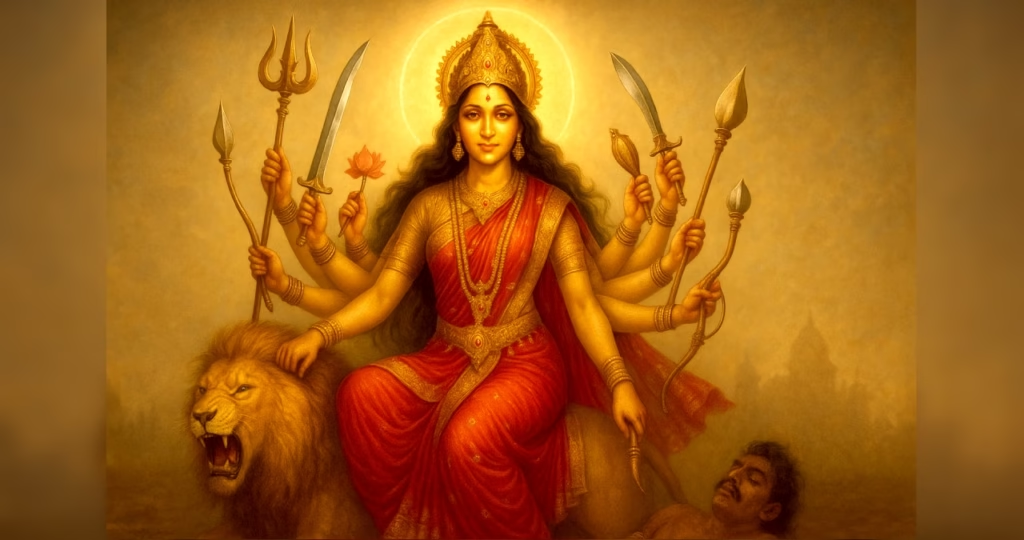
Let’s reimagine the myth using modern science: Durga as a nuclear fusion force, Asura as an asteroid swarm, and Kali as a black hole—the ultimate purifier in the universe.
The Asteroid Swarm – Symbol of Chaos (Asura)
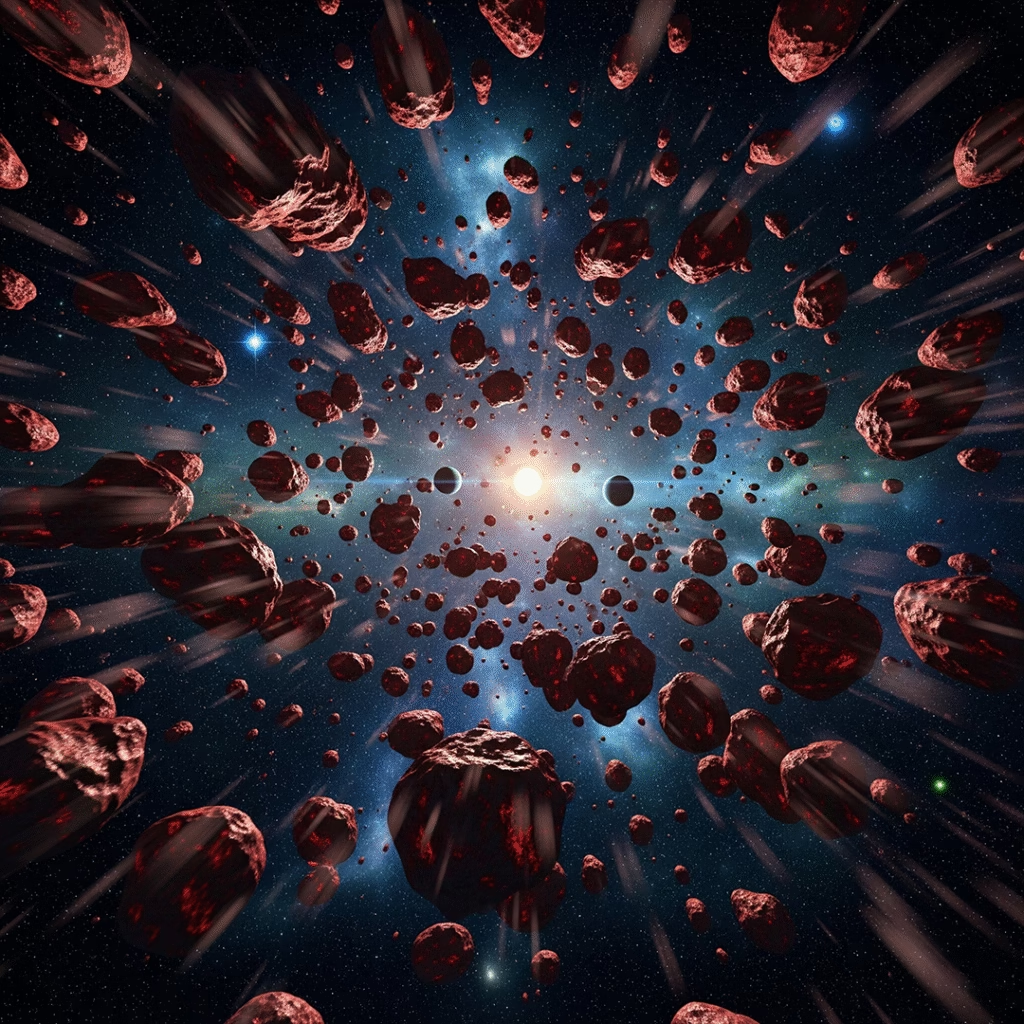
In this reimagined cosmic myth, the Asuras are portrayed as a vast, unstable asteroid swarm hurtling through space, threatening to destroy a peaceful solar system. Their movement is erratic, violent, and uncontrollable—symbolizing disorder and imbalance. This sets the stage for the emergence of cosmic energy to counter the chaos.
Durga as Nuclear Fusion – Birth of Order and Energy
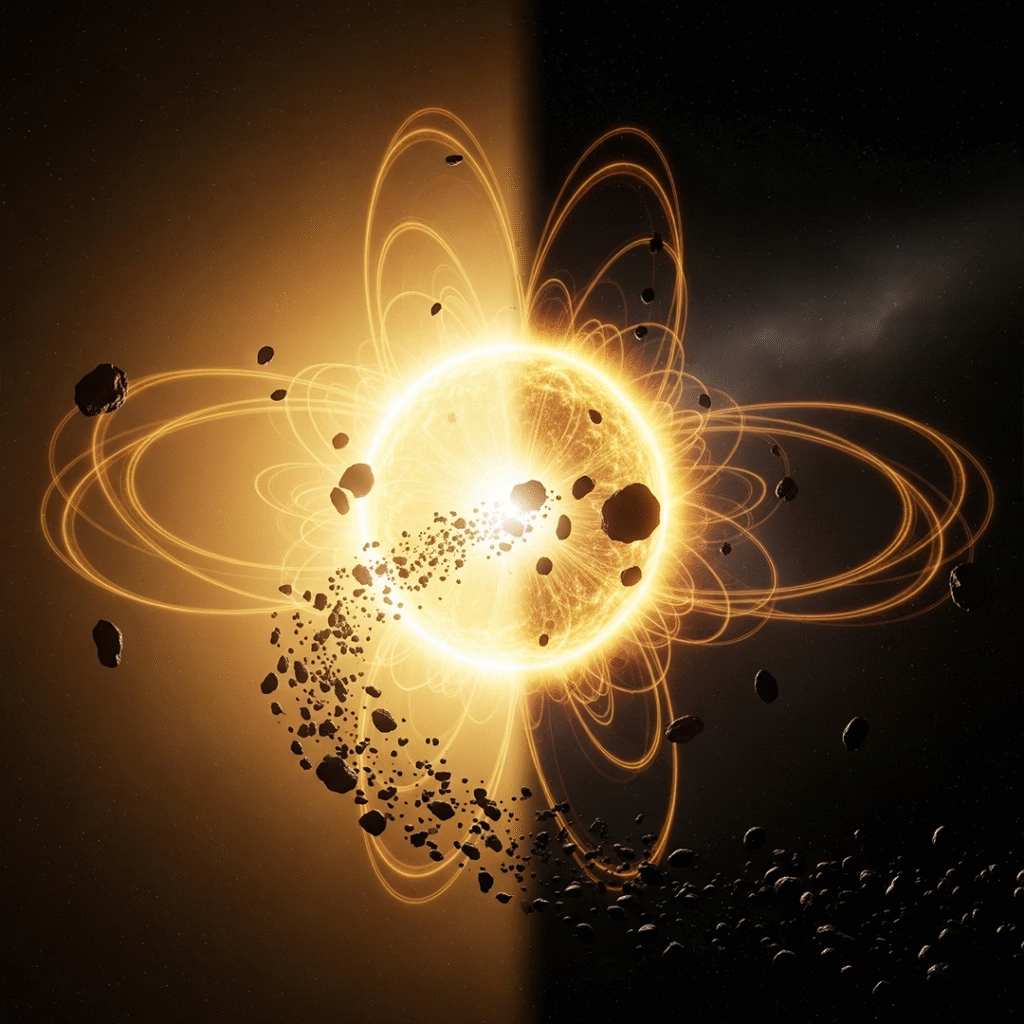
Suddenly, a massive nuclear fusion event bursts into existence, representing the arrival of Durga in a cosmic form. This is the heart of Durga cosmic symbolism—she is not a deity with weapons, but a radiant force of creation, balance, and energy. Like the core of a star, she emits light, organizes matter, and holds gravity in check.
The Clash – When Creation Alone Isn’t Enough
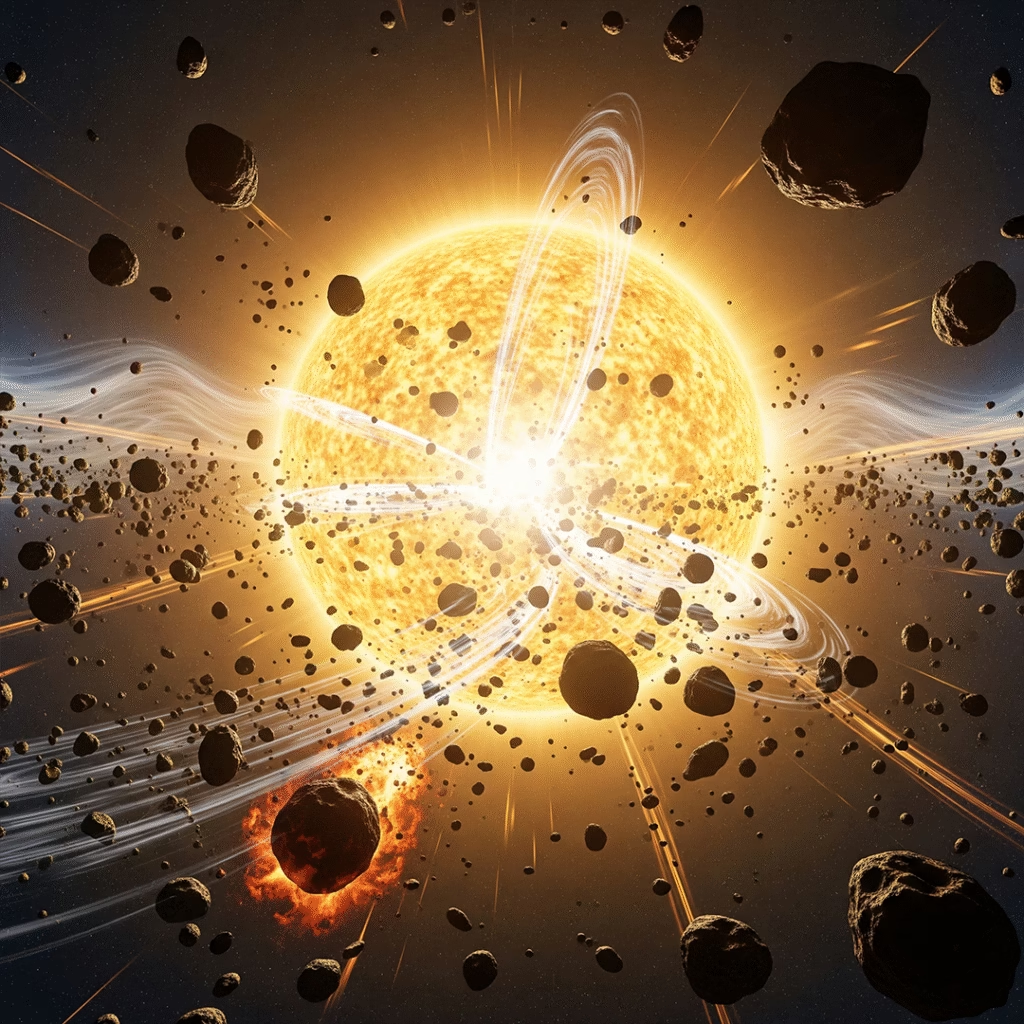
Durga’s fusion field begins to attract and disrupt some of the asteroid swarm, symbolizing her attempt to control chaos. But the mass of destruction is too great. This struggle mirrors ancient myths where Durga battles for days. In this space analogy, it’s the tension within astrophysical mythology symbolism—when energy alone cannot overcome the force of entropy.
Kali Emerges – The Black Hole Metaphor
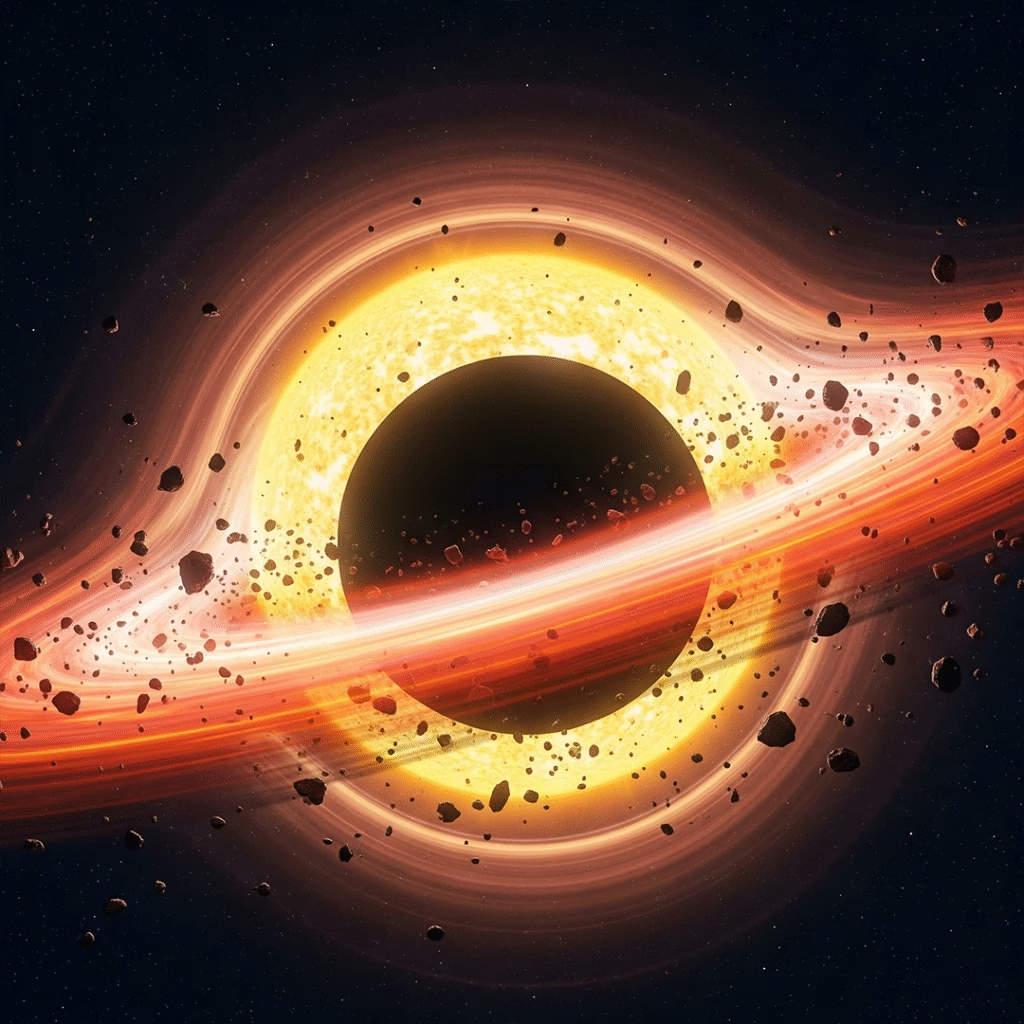
As the cosmic balance tips, space folds inward and gives birth to a black hole. This is Kali, not as a fearsome goddess, but as a natural force of gravitational purification. The Kali black hole metaphor reflects her true purpose: to absorb excess energy and dismantle chaos beyond redemption. She is destruction, not for rage, but for cosmic reset.
The Cleansing – Destruction Becomes Restoration
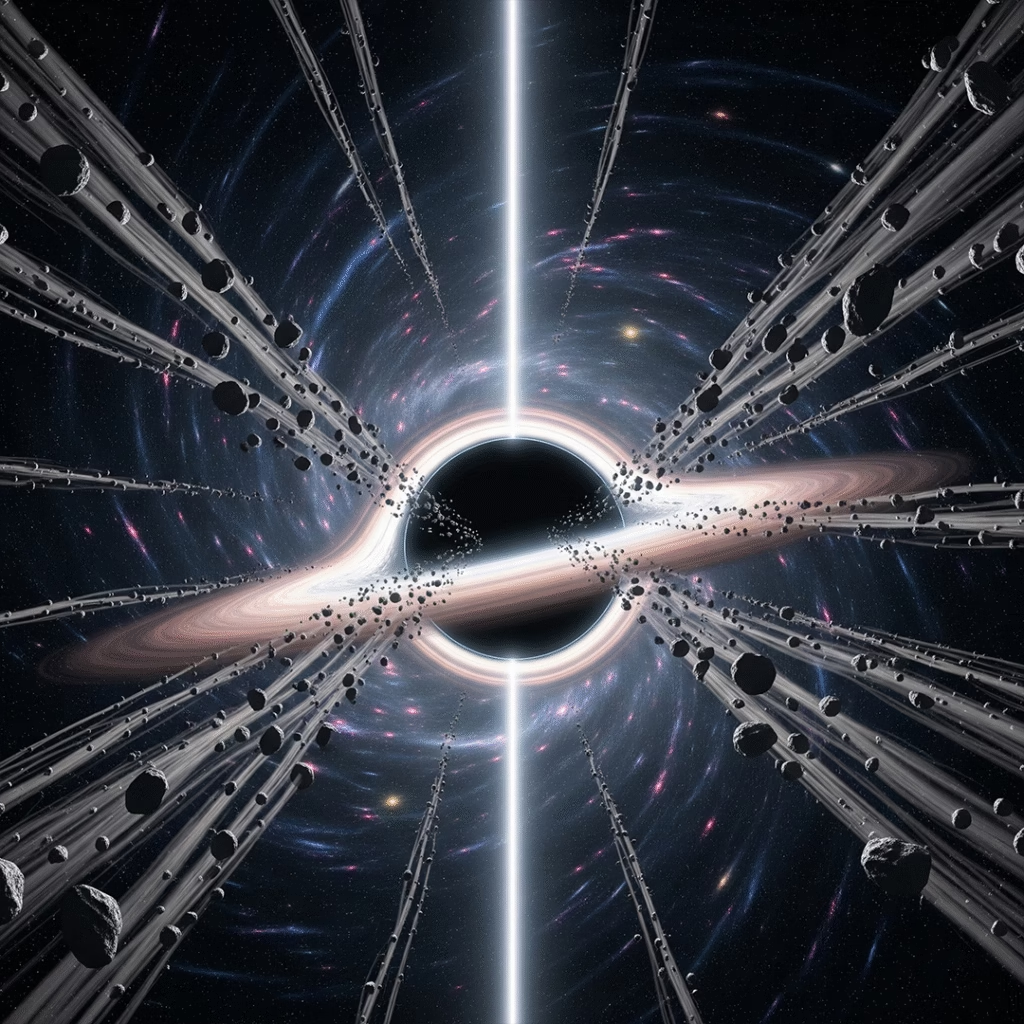
The black hole pulls in the last of the asteroid swarm. Light bends, time distorts, and chaos disappears into the singularity. Durga’s energy remains steady, the cosmic stage begins to calm, and the forces of nature align once more. This part of the story shows how Kali and Durga work in balance—the destroyer and the preserver acting in unison.
Cosmic Balance Returns – Myth Meets Science
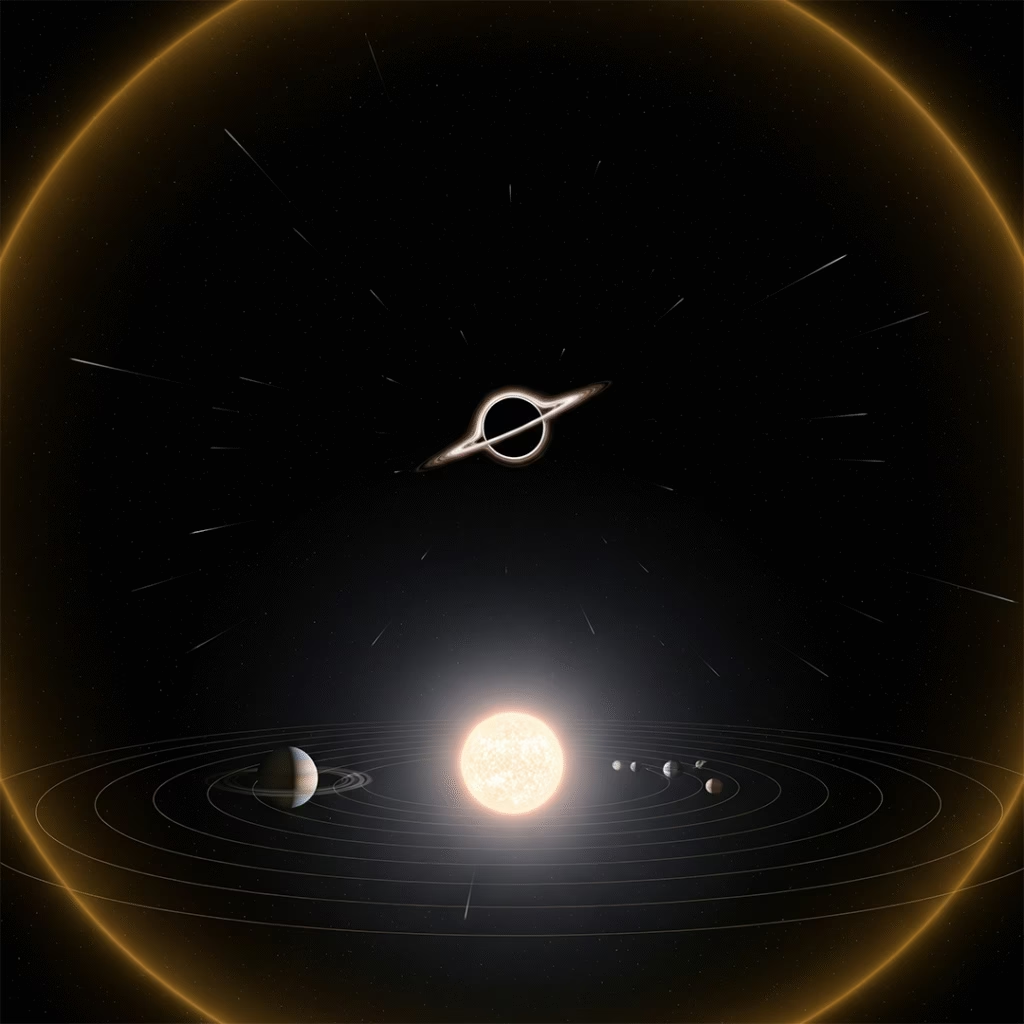
The solar system stabilizes. The fusion energy (Durga) glows softly; the black hole (Kali) rests in silence. Through the lens of Durga cosmic symbolism, we see how ancient myths can be understood as metaphors for natural forces. This story blends astrophysical mythology symbolism with spiritual wisdom, reminding us that chaos, order, destruction, and rebirth are all part of a larger cosmic cycle.
Why This Story Matters
By translating age-old myths into astronomical metaphors, we gain a new lens to view not only ancient stories but also ourselves. The tale of Durga is no longer just a ritual—it becomes a universal principle. The Durga cosmic symbolism shows us that when faced with overwhelming chaos, creation alone may not be enough—sometimes, a deeper force must cleanse the field before balance can be restored.
The Kali black hole metaphor challenges us to accept destruction as necessary for regeneration. And through astrophysical mythology symbolism, we learn that stories of gods and demons are also stories of stars and galaxies, always playing out above us, within us, and beyond time.
Also Read: Cognition Venture: Malda’s Best Digital Marketing Agency in 2025.
